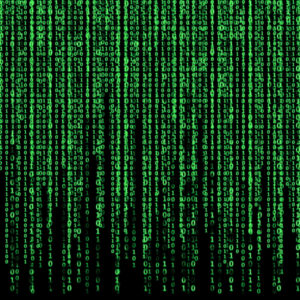 Every few days, I find myself rewatching The Matrix 4: Resurrections movie trailer as though it is the whole film and wonder how I can possibly wait three months until December 22 to be fully immersed in that world again. Certain cultural touchstones stay with each of us through our lives and one of mine will always be The Matrix franchise. It was one of the first films I saw that made me contextualize the cost of living a life unexamined and, later, appreciate the ways in which philosophy can be accessible through popular culture.
Every few days, I find myself rewatching The Matrix 4: Resurrections movie trailer as though it is the whole film and wonder how I can possibly wait three months until December 22 to be fully immersed in that world again. Certain cultural touchstones stay with each of us through our lives and one of mine will always be The Matrix franchise. It was one of the first films I saw that made me contextualize the cost of living a life unexamined and, later, appreciate the ways in which philosophy can be accessible through popular culture.
In graduate school, I realized that my brain connected disparate ephemera from the world around me into some kind of web where everything I learned touched something I encountered. The connections I made seemed odd to my classmates. An American studies course unit on the idea of utopia reminded me of an episode of Star Trek: The Next Generation. A course on existentialism? The Matrix and Blade Runner. This connectivity also worked in reverse: an episode of Babylon 5 would remind me of something I read in Kierkegaard. Last year, I joked on social media that if I could get rid of 80s rap lyrics and science fiction references, I could have a Ph.D. by now. My friend, Michael, replied simply that I just needed to find the right teaching opportunity that allowed me to use my other areas of expertise. It never occurred to me that my ongoing love of science fiction and rap music could be put to practical or, at least, philosophical purposes.
This is how I found myself a few weeks ago building a course around the idea of what it means to be human, leaning into these pop culture pieces that I once thought were frivolous but can now contextualize the human experience. Many of us define ourselves by what we love and what we hate, and it would be impossible to run out of topics to discuss if we looked at the variety of human creations. I mapped the course in an order that seemed logical to me: Ralph Waldo Emerson to have a common vocabulary before moving into readings and discussions on values, social media, and artificial intelligence. And, of course, a screening of The Matrix.
I can’t say our reading of Self-Reliance went over well. Students found him “stuffy” and “hypocritical.” I still read Emerson through a hopeful lens because his essays always found me when I was in the thrall of some existential crisis. Reading Self-Reliance in high school was an intellectual awakening for me. Perhaps what I found so intriguing also applied to my romantic sensibilities of being a great, if misunderstood, 17-year-old. Reading it again with students this semester made me better appreciate that to modern ears, his quotes can sound something like toxic positivity. His calls to go it alone and observations that “everything is connected” seem like ancient fortune cookie messages at best and banal platitudes at worst.
It’s now been two weeks since reading Emerson and I have been surprised to see some of his ideas appearing in their first writing assignments. Students are making their own connections to Emerson that include, but are not limited to, BoJack Horseman, The Wire, Dear Evan Hansen, Kendrick Lamar and Drake lyrics, Mean Girls, and even Star Wars: The Clone Wars. In fact, their ideas make me better appreciate the singularity of each of our experiences and how we can knit together our own webs of connectivity. My philosophy teacher once told me that due to my awareness, the harder I looked for connections the easier they would be to find. At the time, I believed his advice only applied to me (I was still a 17-year-old at heart), but I find myself telling each student this as we discuss their projects. The more they embrace the pop culture touchstone they love, the more it can help contextualize the world around them and hopefully find a way to make sense of it all for themselves.
This past year, students had the time to immerse themselves in shows, movies, music, and books. Often they were derided by parents, teachers, and others for spending too much time watching, listening, and creating. I’m not sure what else they “should” have done during the pandemic—but then again, I don’t consider media consumption a waste of time. In fact, I don’t think the amount of time they spend today is any different from how much time I used to spend watching MTV when I should have been doing homework. Or reading Star Wars fan fiction novels (Splinter of the Mind’s Eye, anyone?). Or playing Space Invaders, Pong, and Frogger. Although our cultural references aren’t always the same, their connection to the material is as passionate as mine. And who’s to say that either of our choices are better than the other?
A student shared that she appreciated being able to write about the pandemic through the lenses of both Emerson and her favorite television show. I wouldn’t have said that’s what the assignment was about, but here she is, weaving the whole of last year into her experiences now. This is a higher level of connectivity that I didn’t anticipate, which made me realize that The Matrix doesn’t fit in with my understanding of the connections students are making for themselves. The film assumes that the choices humans make are clear and deliberate: being awake or asleep. Being a rebel or upholding the status quo. Perhaps the film I should show students is Inception so that we can discuss the layers of embedded ideas, connections, and memories that we carry and keep in our brains in hopes of being able to tease out what it means to be alive and aware right now. In the meantime, my plan is to be in the theater in December with a big bucket of popcorn on my lap, taking notes on how to incorporate the new Matrix film into next year’s classes.

